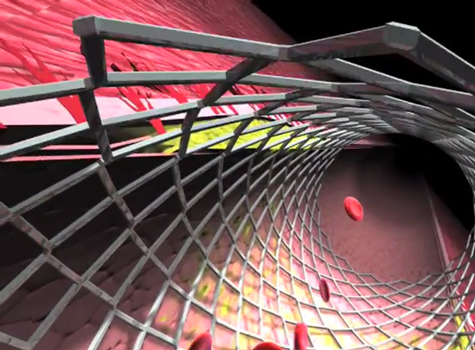Our firm, A2L Consulting, is a national litigation consulting firm with a wide range of trial-focused services from jury consulting to mock trials to trial graphics to courtroom trial technology services. However, most people don't know that I founded A2L 18 years ago after I had taught myself computer animation while in law school.
To me, it made sense to try to fit these two subjects together. In retrospect it was quite smart. At the time, though, my friends and family looked at me with a somewhat perplexed gaze.
You see, animation was just emerging on the scene with movies like Jurassic Park and Toy Story. In the courtroom the first litigation animations were being used in a handful of cases in the late 1980s and early 1990s.
Back then, people would quote animation costs at as high as $1,000 per finished second of animation. These numbers seem preposterous today, as production costs have plummeted and prices more along the lines of $1,000 per finished minute are not uncommon.
However not all litigation animations are created equal. Indeed there are many types and there is a flavor for every case and every budget.
In a previous article I described the types of litigation animation used typically in the courtroom. To summarize, they are PowerPoint animation, 2-D animation, and 3-D animation. There are several variants of 2-D animation, and one looks convincingly similar to 3-D animation.
There are a variety of tools used to produce animation from PowerPoint on a laptop to Flash on a desktop PC or to Maya on a workstation. Not only do the costs of hardware and software vary dramatically but the kind of people who produce these animations vary in their availability and demand.
Suffice it to say that PowerPoint animators are the most readily available and can work on the least expensive hardware-software combination. At the other end of the spectrum are 3-D animators. Good ones are few and far between, and they require high-end software and hardware and lots of experience to produce good work.
Not only is there variability in cost of production, but there is significant variability in the time required to produce a finished product. Some PowerPoint animations can be done in a few minutes and may be all you need for your case. Other 3-D animations may require weeks or months to develop a finished product for trial.
Below is a guideline for what a trial team should expect to pay for three types of typical litigation animation projects.
1. Five minutes of a PowerPoint animation-style exhibit with average complexity. For something along these lines, I would expect to invest between $5,000 and $15,000, with the variability explained by the amount of complexity and the amount of back-and-forth. Here is an example of project like this where video playback patents had to be explained at trial:
Below is an example of another PowerPoint-style animation used in an ITC case involving ground fault circuit interrupters.
2. Ten minutes of animation built from drawings or schematics, perhaps of an environmental spill or plume, an architectural drawing or a bringing a patent drawing to life as we explained in this article. For this project, which likely requires more technical skill in the use of a product like Adobe After Effects or perhaps Flash, I would expect to invest between $10,000 and $35,000. Below is an animation of toner tubes from a patent case. The models were built from existing CAD technical drawings which sometimes saves considerable time and money on litigation animation costs.
Below is an example of 2-D animation used to explain how a power plant works and give a sense of its scale:
3. A 15-minute 3-D animation of a complex subject like a highly technical patent, a structure collapse or perhaps a complex aviation accident. Assuming the animation was still considered demonstrative in nature rather than a simulation, which requires an entirely different level of complexity, I would expect to invest between $40,000 and $150,000 for this type of product. Below is an example of a 3-D animation used in a patent trial that resulted in the 6th largest verdict in patent litigation history:
Below is another 3-D animation used in a mediation for an environmental insurance coverage dispute:
In the 3-D litigation animation example below, the layout of a coal-fired power plant is explored:
Of course all of these costs are highly variable but they provide broad guidance for what to expect and how to look at your projects as you think about trial. Below are some additional materials related to animation for use at trial.
- Free Download: Using Animation & Litigation Graphics Effectively at Trial
- Animation and Graphics in Patent Litigation
- A2L's Litigation Animation Services Homepage
- Use of Litigation Animation and Objections
- How to explain a complicated process with litigation animation and trial graphics
- Explaining pharmaceutical cases with courtroom animation and litigation graphics
- Animation and trial graphics in mining cases
- Litigation animation in architecture and construction cases
- Litigation animation in automobile litigation
- Using courtroom computer animation in aviation cases
- Using litigation animation to create patent technology tutorials






Leave a Comment